Ischgl – Ibiza of the Alps
Ischgl is located at an altitude of 1,400 meters above sea level in the west part of Austria, on the border of Switzerland.
In this article we’ll show you everything you need to know before planning a vacation to Ischgl, and if you stay until the end of this article, you’ll get some great tips that will help you to make better decisions and save you time and money!

The closest airports to Ischgl are Innsbruck, Friedrichshafen and Memmingen, with transfer times of 1 hour and 20 minutes, 2 hours and 5 minutes, and 2 hours and 17 minutes accordingly.
Another two major airports, Zurich and Munich, are close by too, with transfer times of 2 hours and 35 minutes and 3 hours and 9 minutes, respectively.
Here’s the best online flight engine:
Here’s the best online car rental website.
We will get a small commission if you buy through our links. This way, you will support us in making better videos for you and future tools on the website.
If you travel through Zurich, Memmingen or Friedrichshafen, be aware that the Silvretta pass is closed during winter. Some built-in car GPS systems might send you that way by mistake, so make sure you check before you travel.
Ischgl is considered one of the best ski resorts in the world and is well known for its state-of-the-art lift systems, great apres ski, and many off-piste areas.

The ski area of Ischgl is called the Silvretta ski area, named after the Silvretta mountain range, which makes the border between Austria and Switzerland as well as Tirol and Vorarlberg.
The ski area is a united ski area for both Ischgl and the Swiss duty-free village of Samnoun and includes 239km of ski runs, 90% of which are more than 2,000 meters above sea level, making it the best late-season ski area in Austria.

The Ski Season in Ischgl is one of the longest in the world and runs from late November all the way until early May.

The Silvretta ski area has 45 ski lifts and is comprised of 47km of blue runs, 143km of red runs, 34km of black runs and 15km of ski routes, which are kind of inspected off-piste slopes.
There are 3 cable cars available to take you from the village:

First, the Silvretta, which will take you to the Idalp area at an altitude of 2,300 metres;
Second, the Fimba, that will take you to the same place;
And finally, the new Pardachgrat cable car that will lift you to the Prdachgrat peak, at an altitude of 2,650
metres.

We recommend booking a hotel near the Fimba lift because it has fewer lines compared to both the Silvretta and Pardachgrat cable cars, which are both situated next to large parking lots and are therefore much busier as they serve all the skiers that come from other towns in the Paznoun Valley.

The Idalp area is the hub of the ski area, and from there, you can continue to many other peaks or ski back to the village and other lifts.
The Idalp area also serves as the meeting point of the ski school.
The most outstanding fact about the Idalp area is that it has the highest concert stage in Europe, and every year, at the end of the season festival, big stars like Rihanna, Beyoncé and many others, perform.

One of the most unique things in Ischgl is to ski along Run 80, aka Duty-Free Run.

You can bypass the village if you want, but we recommend you take a break there and explore the lovely village.
Today, you can find most of the products there, cheaper online, or at the supermarket in your home town, but the story of doing duty-free shopping in Switzerland in the middle of your day of skiing is a good story to tell or to upload to Instagram.

From Samnaun, you can take the double-decker cable car that can carry as many as 180 skiers at one time, and is one of the largest cable cars in the world!
Recommended Hotels
Ischgl’s pedestrian Dorfstrasse sits at the foot of all three high-speed cable cars (Fimba, Silvretta & Pardatschgrat), so almost every top hotel is only a few boot-steps from the lifts and the legendary Paznauner Taja → Trofana Alm → Kuhstall après-ski crawl. The properties below follow that same street-to-slopes geography, starting beside the Silvretta bridge and ending near the Pardatschgrat base.
Trofana Royal crowns the village with two Gault-Millau restaurants, a vast Roman-style spa and a ski concierge who clicks your bindings before you’ve sipped the breakfast champagne.
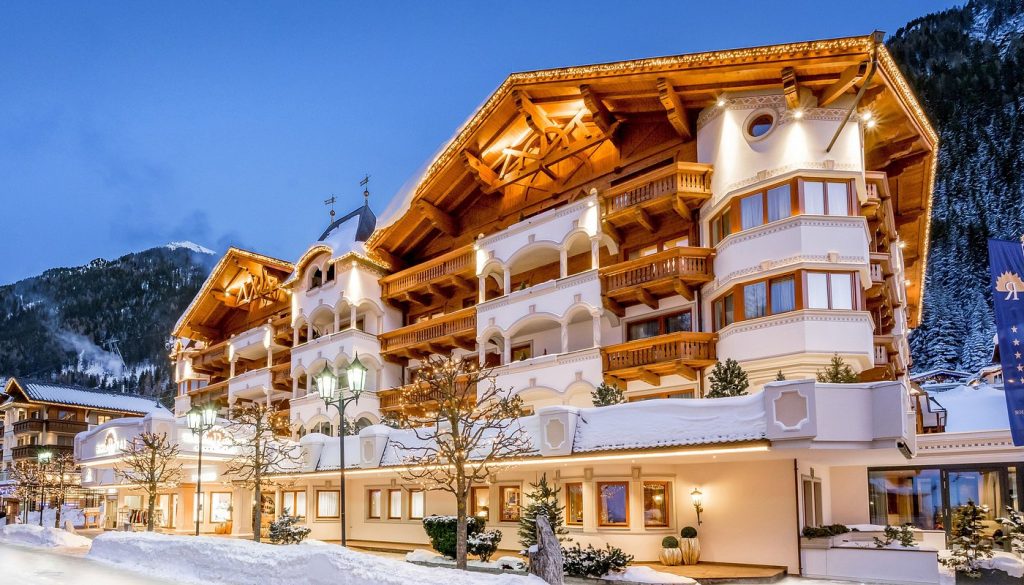
Schlosshotel Ischgl delivers palace-style suites, an in-house ski shop and a private piste bridge that drops guests straight onto the home-run at day’s end.
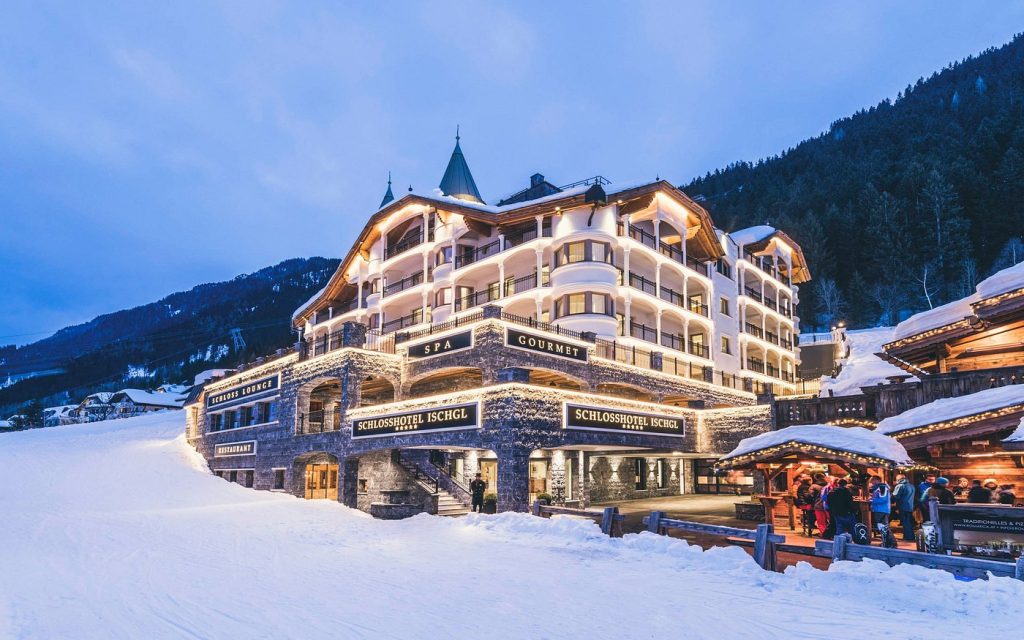
Hotel Sonne blends genuine Tyrolean hospitality with a rooftop spa and wine bar two minutes from the Silvretta gondola.
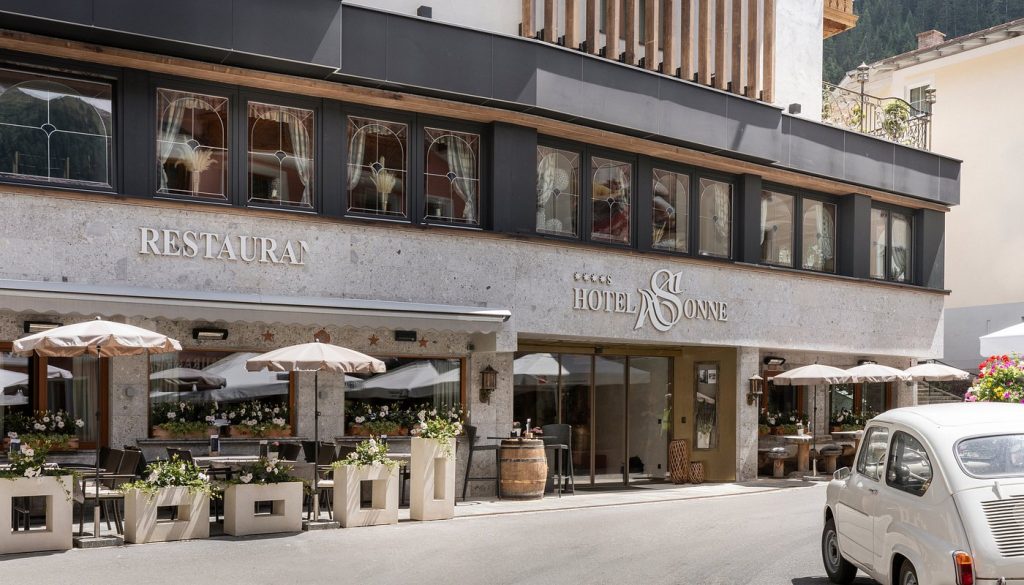
Elizabeth Arthotel pairs gallery-worthy art with ski-in/ski-out access, an infinity pool and the slope-side Schatzi Bar for instant après.
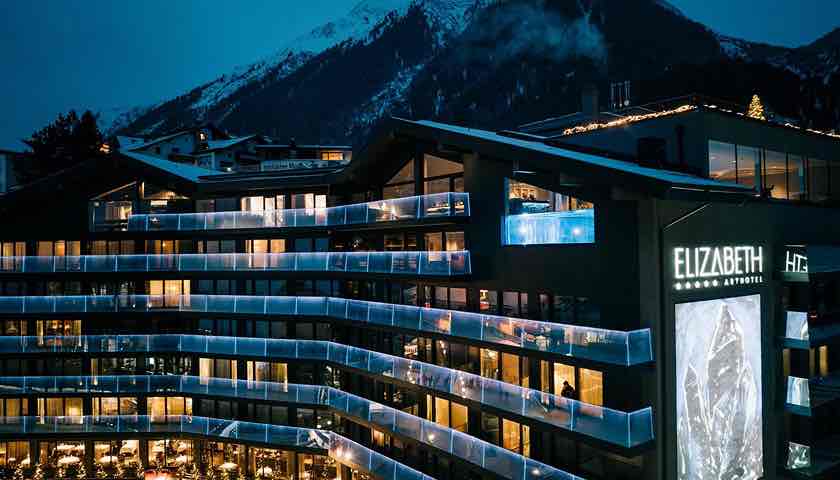
Hotel Garni Mondin earns family kudos for its indoor-outdoor pool, children’s playroom and 60-second walk to both main gondolas.
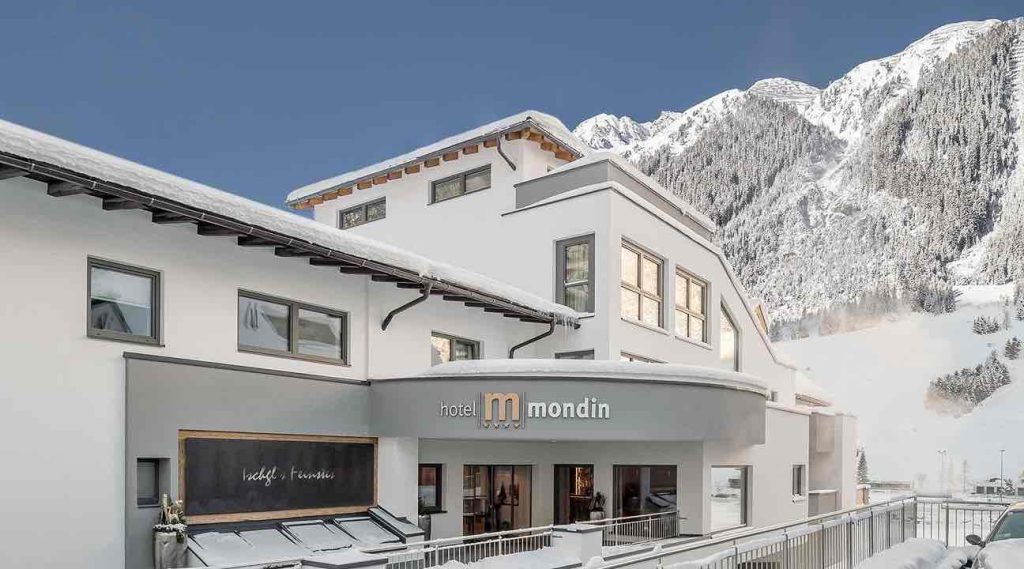
Hotel Madlein is Austria’s original design ski hotel—think minimalist rooms, a candle-lit spa and a resident DJ—yet still welcomes older kids in inter-connecting suites.
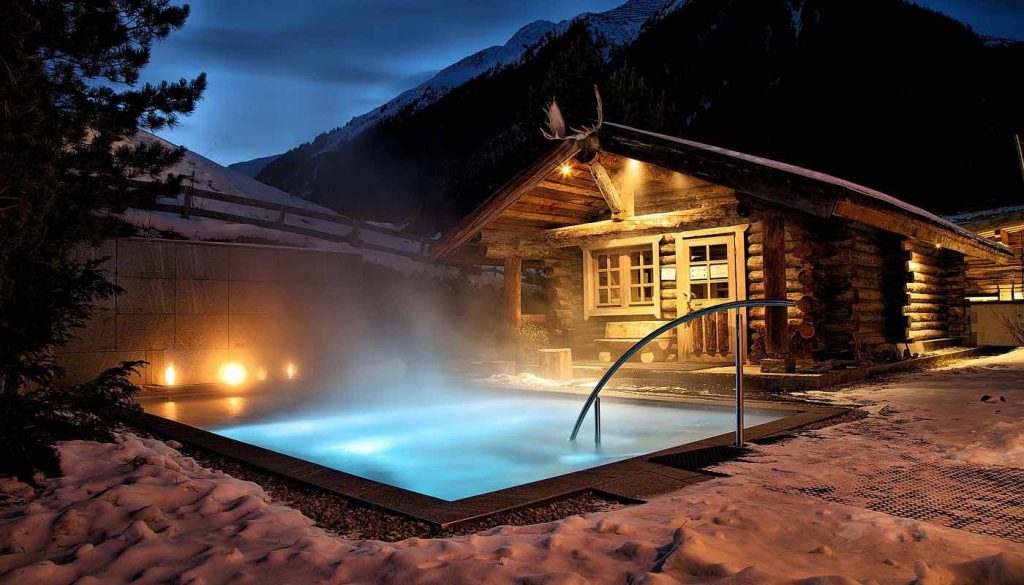
Hotel Victoria keeps costs sensible with homely pine rooms, a small wellness zone and hearty half-board just behind the Silvretta Center.
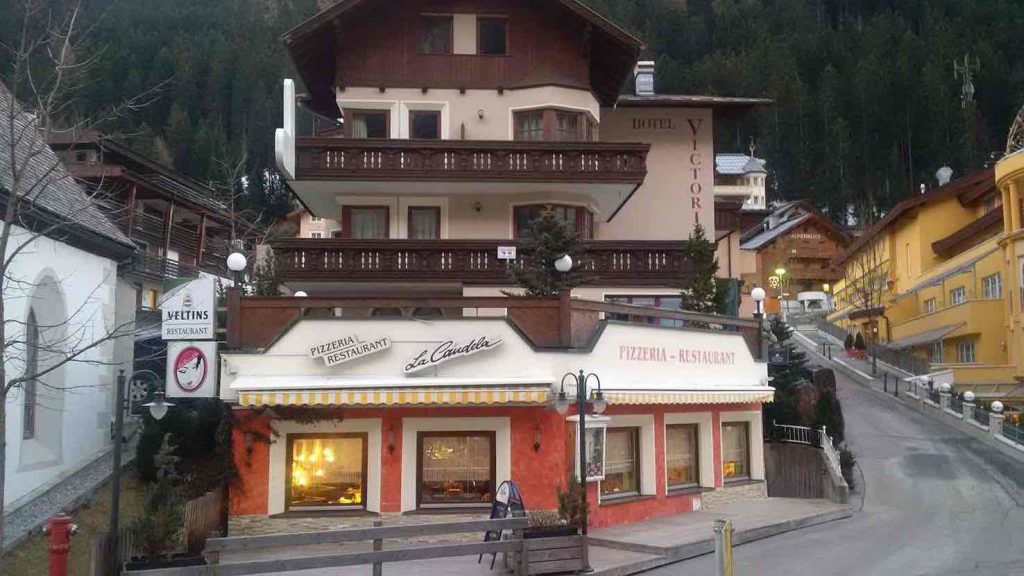
Goldener Adler occupies a 17th-century coaching inn updated with smart alpine décor, ski lockers and a wallet-friendly B&B rate.
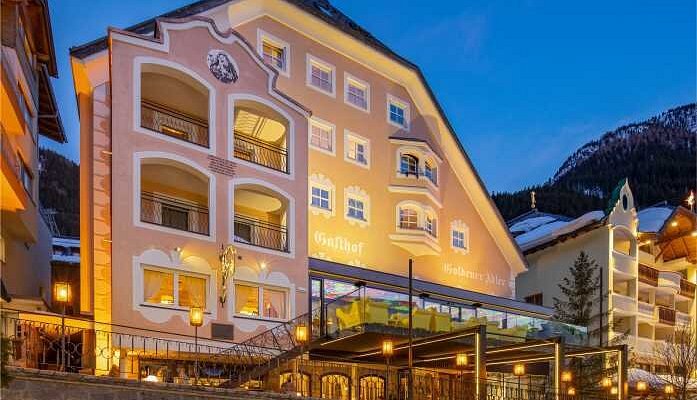
Apre Ski
If you want to have a great Ischgl apres-ski experience, we recommend that you’ll grab your first beer at Paznauner Taja, which is the most popular on-mountain apres ski in the region.

From there, you can ski directly to Trofana Alm, stay there until the party is over around 7 or 8, and then continue to Kuhstall.

In Kuhstall, the party continues right up until 4 am, or if you prefer, you can move on at around midnight, either to Fire & Ice on the other side of the square, or go to the hotel post-club. Alternatively, finish your night at Pacha.

We were in Ischgl off-season during shootings, but believe me, these places are bustling all season.
Before we wrap up, here are our ratings for Ischgl:
For snowboarders: it’s a 9. The Silvretta area has many off-piste areas and runs for every level. The Snow Park is great and is equipped with an air cushion, which is excellent if you’d like to try some jumps you just wouldn’t without it, and you won’t use a T-bar.

Advance skiers: an 8. There are 34km of black runs, 15km of ski routes and a vast amount of off-piste terrain.
Intermediate skiers: 9.
Beginners: it’s a 7. Given that it’s quite hard to get back to the village, and the relatively high rental cost for both equipment and Ski lessons, it can become quite a costly vacation.
Freestylers: 9.5 . A great snow park with a variety of elements, and the jewel in the crown is the air cushion. The fact that there is no direct lift to the jumps section of the park damages the otherwise perfect score.
Free riders: 9. One of the best free-rider ski areas in Europe.
Nightlife: 9.
Apres ski: 10. The variety of top-notch apres ski bars in the village is second to none.
Resort charm: 8.5. The pedestrian area is one of the most beautiful of any ski resort anywhere.
Our total score for Ischgl is 9.
Our bonus tips for Ischgl:
Don’t miss the longest toboggan run in Europe, with a length of 7 km. The run is only open on Monday and Tuesday nights. The ascent is via the Silvretta lift.

An extra tip for Apres ski animals: don’t book half-board hotels! Most pre-paid dinner menus run between 7 and 9, and unlike most other Ski resorts, some of the best Apres ski moments take place at that time, so you’ll be missing out on what you paid for!
Our last tip,
is the fact that Ischgl has underground passages, that you don’t really see in google maps when you try to decide which hotel to book.

To understand the layout of the village, and the locations of parking garages, lifts, Bars and tunnels etc. You want to see this video:
Array

